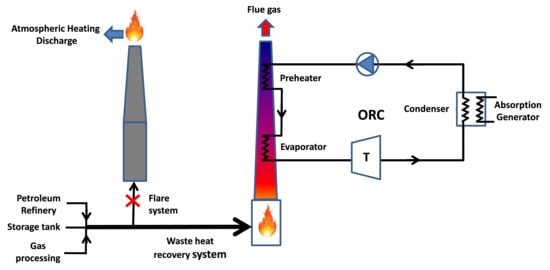Flare Gas Waste Heat Recovery: Assessment of Organic Rankine Cycle for Electricity Production and Possible Coupling with Absorption Chiller
Abstract
1. Introduction
2. Thermodynamic Model
- Turbine and feeding pump isentropic efficiencies fixed at 0.8 [28]
- Tev = 300 °C, considered as the highest temperature for the high-temperature working fluid [28]
- Tc = 120 °C; fixed based on the corresponding saturation pressure, Psat = 1.31 bar > Patm
- Ideal conversion from mechanical to electrical power
- Flare gas considered as semi perfect, meaning that the thermophysical properties depend only on the temperature contrarily to the ideal gas with constant thermophysical properties.
2.1. Specific Heat Capacity Model of the Flare Gas
2.2. ORC Cycle Thermodynamic Model
2.2.1. Energy Analysis
2.2.2. Exergy Analysis
3. Results
3.1. Evaporation Temperature Sensitivity Analysis
3.2. Heat Source Inlet Temperature Sensitivity Analysis
3.3. Super Heating Temperature Sensitivity Analysis
3.4. Turbine Efficiency Sensitivity Analysis
3.5. Integration of Absorption Chiller
4. Conclusions and Perspectives
Author Contributions
Funding
Acknowledgments
Conflicts of Interest
Nomenclature
| Cp | Specific heat at constant pressure (kJ·kg−1·K−1) |
| Exergy rate (kW) | |
| h | Specific enthalpy (kJ·kg−1) |
| Destruction of exergy (kW) | |
| Mass flow rate (kg·s−1) | |
| P | Pressure (kPa) |
| Heat power absorbed (kW) | |
| Q | Specific heat (kJ·kg−1) |
| R | Gas constant (kJ·kg−1·K−1) |
| S | Specific entropy (kJ·kg−1·kg−1) |
| T | Temperature (°C) |
| ΔTsup | Super heating temperature (°C) |
| ΔTsub | Sub cooling temperature (°C) |
| Power (kW) |
| COP | Coefficient Of Performance |
| FGN | Fuel Gas Network |
| FGR | Flare Gas Recovery |
| GTL | Gas to Liquid |
| GTW | Gas To Wire |
| GWP | Global Warming Potential |
| ICE | Internal-Combustion Engine |
| LPG | Liquefied Petroleum Gas |
| NDC | Nationally Determined Contribution |
| ODP | Ozone Depletion Potential |
| ORC | Organic Rankine Cycle |
| PNG | Piped Natural Gas |
| SRC | Steam Rankine Cycle |
| VOC | Volatile Organic Compound |
| c | Condenser |
| csi/cso | Cold sink inlet/outlet |
| cm | Cooling medium |
| ev | Evaporator |
| ex | Exergy |
| fg | Flare gas |
| h | Heating |
| hsi/hso | Heat source inlet/outlet |
| hp | High pressure |
| in | Inlet |
| out | Outlet |
| p | Pump |
| pre | Preheator |
| T | Turbine |
| th | Thermal |
| rat | Ratio |
| wf | Working fluid |
| η | Efficiency (%) |
References
- Zolfaghari, M.; Pirouzfar, V.; Sakhaeinia, H. Technical characterization and economicevaluation of recovery of flare gas in various gas-processing plants. Energy 2017, 124, 481–491. [Google Scholar] [CrossRef]
- Rahimpour, M.; Jamshidnejad, Z.; Jokar, S.; Karimi, G.; Ghorbani, A.; Mohammadi, A. A comparative study of three different methods for flare gas recovery of Asalooye Gas Refinery. J. Nat. Gas Sci. Eng. 2012, 4, 17–28. [Google Scholar] [CrossRef]
- Fawole, O.G.; Cai, X.-M.; MacKenzie, A.R. Gas flaring and resultant air pollution: A review focusing on black Carbon. Environ. Pollut. 2016, 216, 182–197. [Google Scholar] [CrossRef] [PubMed]
- Elvidge, C.D.; Zhizhin, M.; Baugh, K.; Hsu, F.-C.; Ghosh, T. Methods for global survey of natural gas flaring from visible infrared imaging radiometer suite data. Energies 2015, 9, 14. [Google Scholar] [CrossRef]
- Andersen, R.D.; Assembayev, D.V.; Bilalov, R.; Duissenov, D.; Shutemov, D. Efforts to Reduce Flaring and Venting of Natural Gas World-Wide; Norwegian University of Science and Technology: Trondheim, Norway, 2012. [Google Scholar]
- Elvidge, C.D.; Bazilian, M.D.; Zhizhin, M.; Ghosh, T.; Baugh, K.; ChiHsu, F. The potential role of natural gas flaring in meeting greenhouse gas mitigation targets. Energy Strategy Rev. 2018, 20, 156–162. [Google Scholar] [CrossRef]
- Knizhnikov, A. Russian Associated Gas Utilization: Problems and Prospects; Annual Report within the Framework of the Project Environment and Energy: International Context. Issue 1. WWF-Russia, Institute of World Economy and International Relations of the Russian Academy of Sciences. 2009. Available online: https://wwf.ru/en/resources/publications/booklets/russian-associated-gas-utilization-problems-and-prospects/ (accessed on 8 March 2020).
- Heidari, M.; Ataei, A.; Rahdar, M.H. Development and analysis of two novel methods for power generation from flare gas. Appl. Therm. Eng. 2016, 104, 687–696. [Google Scholar] [CrossRef]
- Heydari, M.; Abdollahi, M.A.; Ataei, A.; Rahdar, M.H. Technical and Economic survey on power generation by use of flaring purge gas. In Proceedings of the International Conference on Chemical, Civil and Environmental Engineering (CCEE), Istanbul, Turkey, 5–6 June 2015. [Google Scholar]
- Ojijiagwo, E.; Oduoza, C.F.; Emekwuru, N. Economics of gas to wire technology applied in gas flare management. Eng. Sci. Technol. Int. J. 2016, 19, 2109–2118. [Google Scholar] [CrossRef]
- Ojijiagwo, E.; Oduoza, C.F.; Emekwuru, N. Technological and economic evaluation of conversion of potential flare gas to electricity in Nigeria. Procedia Manuf. 2018, 17, 444–451. [Google Scholar] [CrossRef]
- Anosike, N.B. Thechno-economic Evaluation of Flared Natural Gas Reduction and Energy Recovery Using Gas-To-Wire Scheme. Ph.D. Thesis, Cranfield University, Bedford, UK, 2013. [Google Scholar]
- Rahimpoura, M.R.; Jokara, S.M. Feasibility of flare gas reformation to practical energy in Farashband gas refinery: No gas flaring. J. Hazard. Mater. 2012, 209, 204–217. [Google Scholar] [CrossRef]
- Hajizadeh, A.; Mohamadi-Baghmolaei, M.; Azin, R.; Osfouri, S.; Heydari, I. Technical and economic evaluation of flare gas recovery in a giant gas refinery. Chem. Eng. Res. Des. 2018, 131, 506–519. [Google Scholar] [CrossRef]
- Al-Fehdly, H.; ElMaraghy, W.; Wilkinson, S. Carbon Footprint Estimation for Oil Production: Iraq Case Study for The Utilization of Waste Gas in Generating Electricity. Procedia Cirp. 2019, 80, 389–392. [Google Scholar] [CrossRef]
- Adekomaya, O.; Jamiru, T.; Sadiku, R.; Huan, Z.; Sulaiman, M. Gas flaring and its impact on electricity generation in Nigeria. J. Nat. Gas Sci. Eng. 2016, 29, 1–6. [Google Scholar] [CrossRef]
- Iora, P.; Bombarda, P.; Gómez Aláez, S.L.; Invernizzi, C.; Rajabloo, T.; Silva, P. Flare gas reduction through electricity production. Energy Sources Part A Recovery Util. Environ. Eff. 2016, 38, 3116–3124. [Google Scholar] [CrossRef]
- Tahouni, N.; Gholami, M.; Panjeshahi, M.H. Integration of flare gas with fuel gas network in refineries. Energy 2016, 111, 82–91. [Google Scholar] [CrossRef]
- Hasan, M.M.F.; Karimi, I.A.; Avison, C.M. Preliminary synthesis of fuel gas networks to conserve energy & preserve the environment. Ind. Eng. Chem. Res. 2011, 50, 7414–7427. [Google Scholar] [CrossRef]
- Comodi, G.; Renzi, M.; Rossi, M. Energy efficiency improvement in oil refineries through flare gas recovery technique to meet the emission trading targets. Energy 2016, 109, 1–12. [Google Scholar] [CrossRef]
- Combined Heat and Power (CHP) Partnership, Waste Heat to Power Systems. 2012. Available online: https://www.epa.gov/sites/production/files/2015-07/documents/waste_heat_to_power_systems.pdf (accessed on 8 March 2020).
- Aboelwafa, O.; Fateen, S.E.K.; Soliman, A.; Ismail, I.M. A review on solar Rankine cycles: Working fluids, applications, and cycle modifications. Renew. Sustain. Energy Rev. 2018, 82, 868–885. [Google Scholar] [CrossRef]
- Zero Routine Flaring by 2030 Initiative. Available online: https://www.worldbank.org/en/programs/zero-routine-flaring-by-2030 (accessed on 23 March 2020).
- Li, C.; Hsu, N.C.; Sayer, A.M.; Krotkov, N.A.; Fu, J.S.; Lamsal, L.N.; Lee, J.; Tsay, S.-C. Satellite observation of pollutant emissions from gas flaring activities near the Arctic. Atmos. Environ. 2016, 133, 1–11. [Google Scholar] [CrossRef]
- Emam, E.A. Gas flaring in industry: An overview. Pet. Coal 2015, 57, 532–555. [Google Scholar]
- Ziyarati, M.T.; Bahramifar, N.; Baghmisheh, G.; Younesi, H. Greenhouse gas emission estimation of flaring in a gas processingplant: Technique development. Process Saf. Environ. Prot. 2019, 123, 289–298. [Google Scholar] [CrossRef]
- Andreasen, J.G.; Meroni, A.; Haglind, F. A Comparison of Organic and Steam Rankine Cycle Power Systems for Waste Heat Recovery on Large Ships. Energies 2017, 10, 547. [Google Scholar] [CrossRef]
- Lai, N.A.; Wendland, M.; Fischer, J. Working fluids for high-temperature organic Rankine cycles. Energy 2011, 36, 199–211. [Google Scholar] [CrossRef]
- Giwa, S.O.; Nwaokocha, C.N.; Kuye, S.I.; Adama, K.O. Gas flaring attendant impacts of criteria and particulate pollutants: A case of Niger Delta region of Nigeria. J. King Saud Univ. Eng. Sci. 2019, 31, 209–217. [Google Scholar] [CrossRef]
- NDC-Algeria. Available online: https://www4.unfccc.int/sites/NDCStaging/Pages/Search.aspx?k=algeria (accessed on 23 March 2020).
- Le, V.L.; Kheiri, A.; Feidt, M.; Pelloux-Prayer, S. Thermodynamic and economic optimizations of a waste heat to power plant driven by a subcritical ORC (Organic Rankine Cycle) using pure or zeotropic working fluid. Energy 2014, 78, 622–638. [Google Scholar]
- Wang, D.; Ling, X.; Peng, H.; Liu, L.; Tao, L. Efficiency and optimal performance evaluation of organic Rankine cycle for low grade waste heat power generation. Energy 2013, 50, 343–352. [Google Scholar]
- Molés, F.; Navarro-Esbrí, J.; Peris, B.; Mota-Babiloni, A.; Kontomaris, K.K. Thermodynamic analysis of a combined organic Rankine cycle and vapor compression cycle system activated with low temperature heat sources using low GWP fluids. Appl. Therm. Eng. 2015, 87, 444–453. [Google Scholar]
- Michel, F. Génie Energétique Du Dimensionnement des Composants au Pilotage des Systèmes; Collection: Technique et Ingénierie; Dunod: Malakoff, France, 2004; ISBN 978-2-10-070545-0. [Google Scholar]
- Bell, H.I.; Wronski, J.; Quoilin, S.; Lemort, V. Pure and pseudo-pure fluid thermophysical property evaluation and the Open-Source thermophysical property library CoolProp. Ind. Eng. Chem. Res. 2014, 53, 2498–2508. [Google Scholar] [CrossRef]
- Sarbu, I.; Sebarchievici, C. General reviewof solar-powered closed sorption refrigeration systems. Energy Convers. Manag. 2015, 105, 403–422. [Google Scholar] [CrossRef]
- Bataineh, K.; Taamneh, Y. Review and recent improvements of solar sorption cooling systems. Energy Build. 2016, 128, 22–37. [Google Scholar] [CrossRef]
- Ebrahimi, M.; Keshavarz, A. CCHP Technology. Combined Cooling, Heating and Power Decision-Making, Design and Optimization; Elsevier: Amsterdam, The Netherlands, 2015; pp. 35–91. [Google Scholar] [CrossRef]
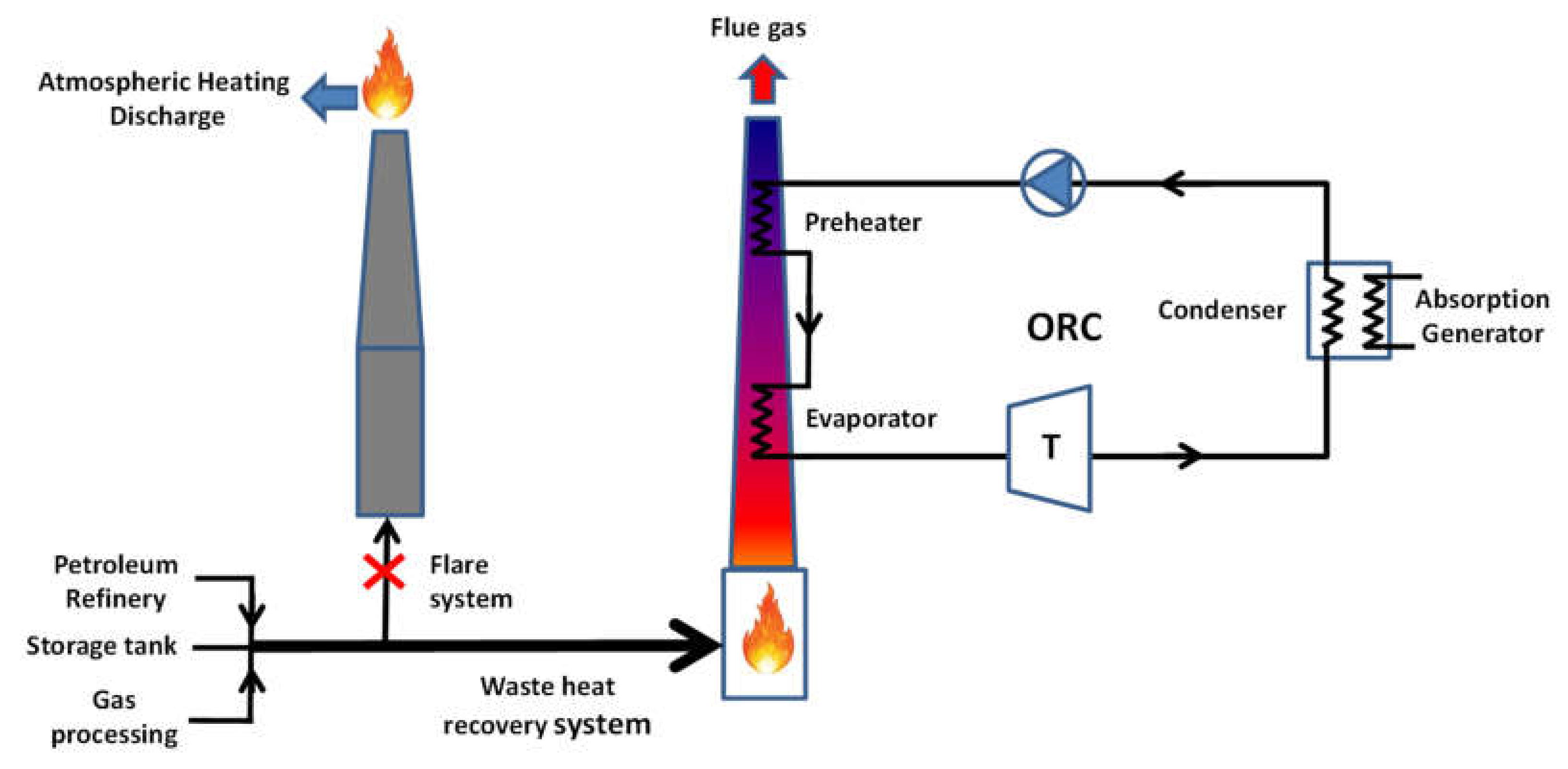
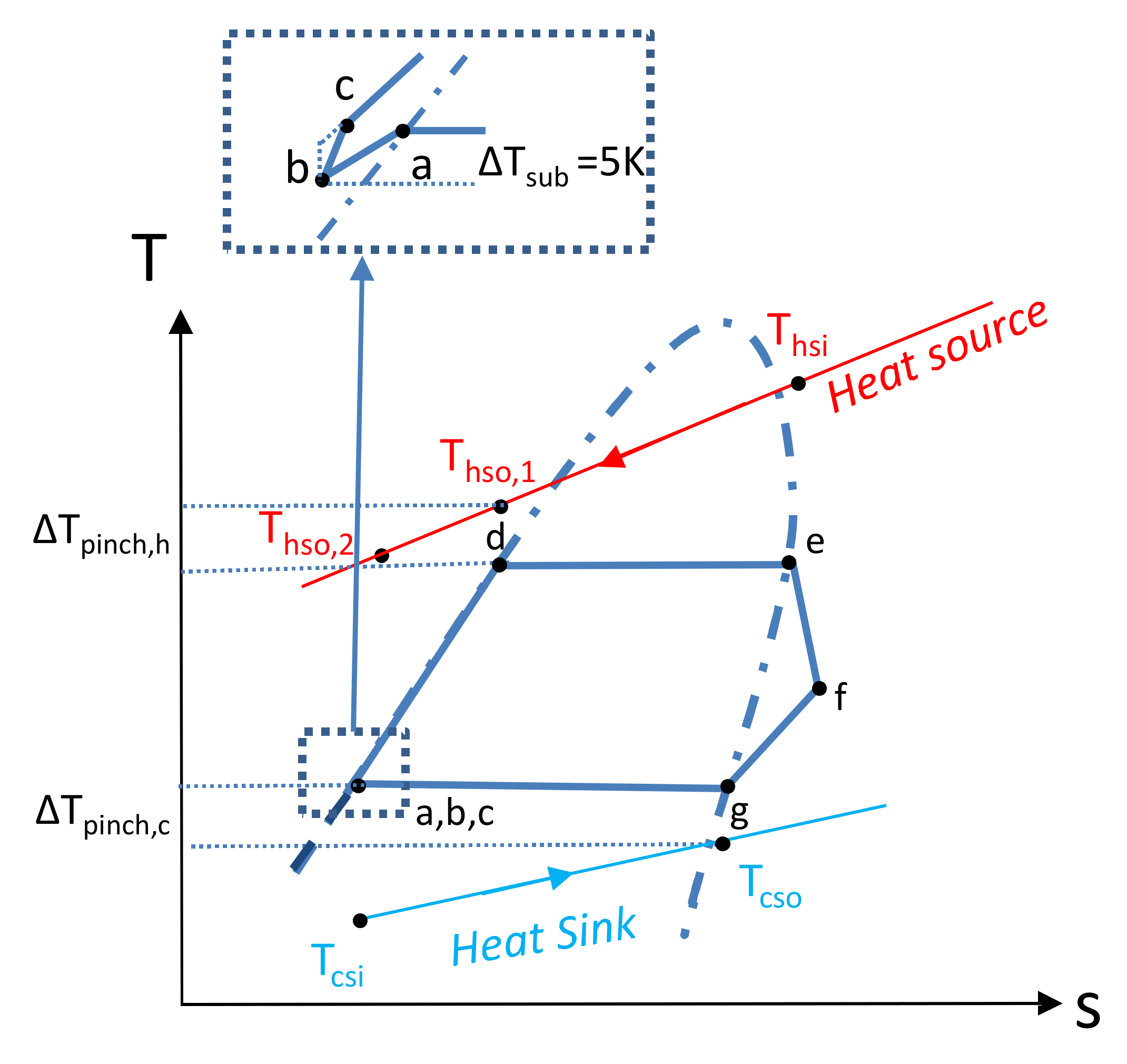


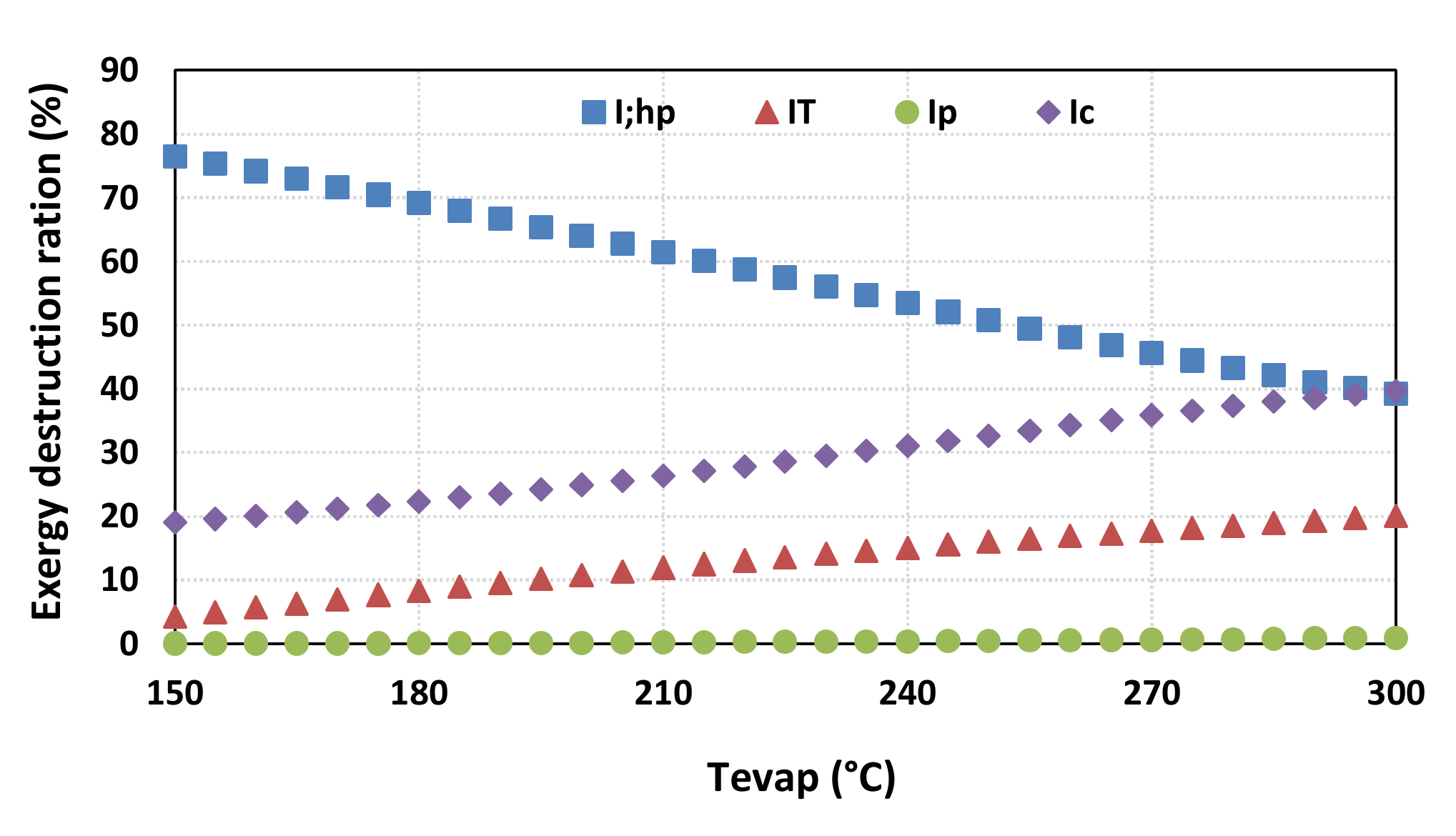
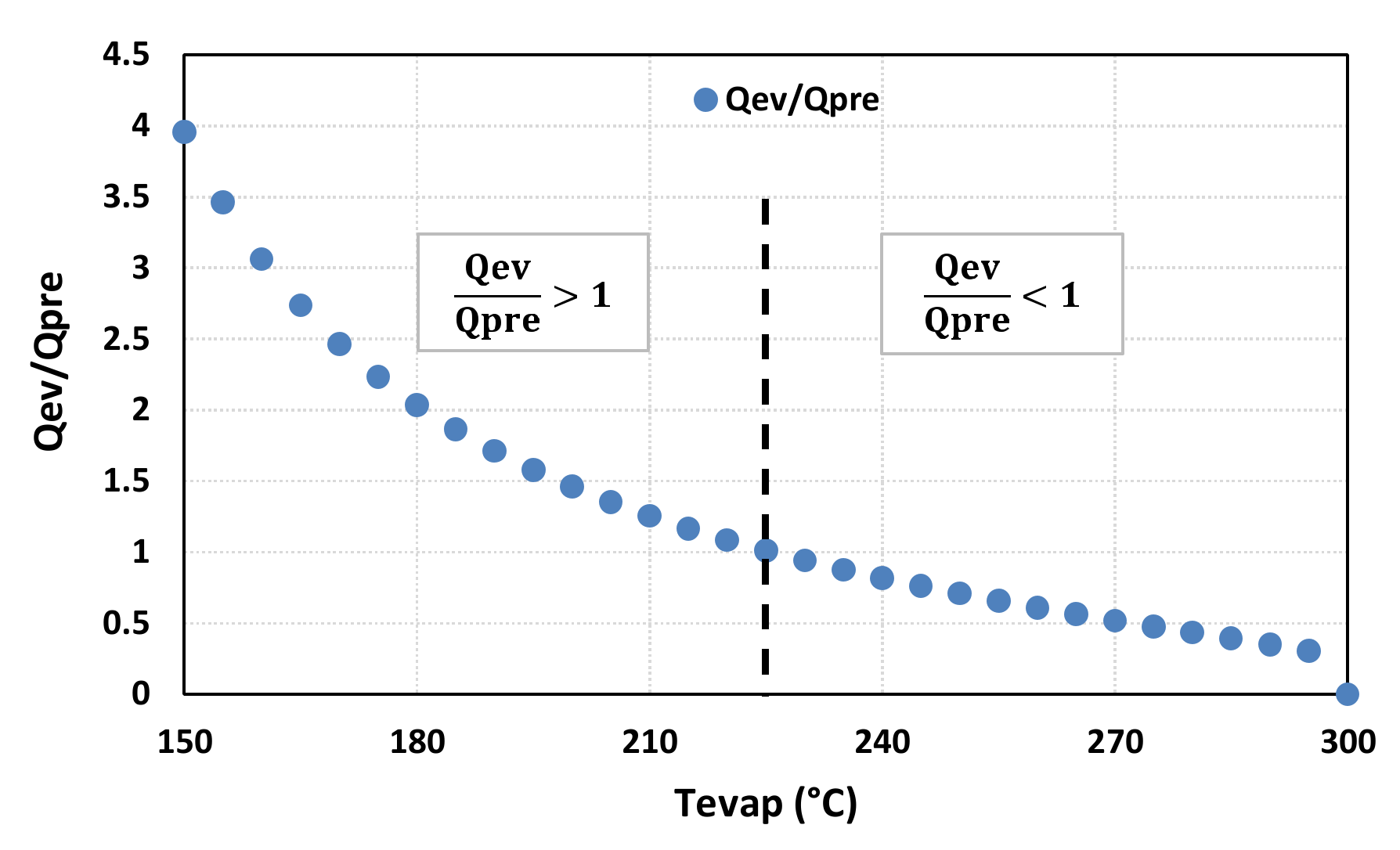
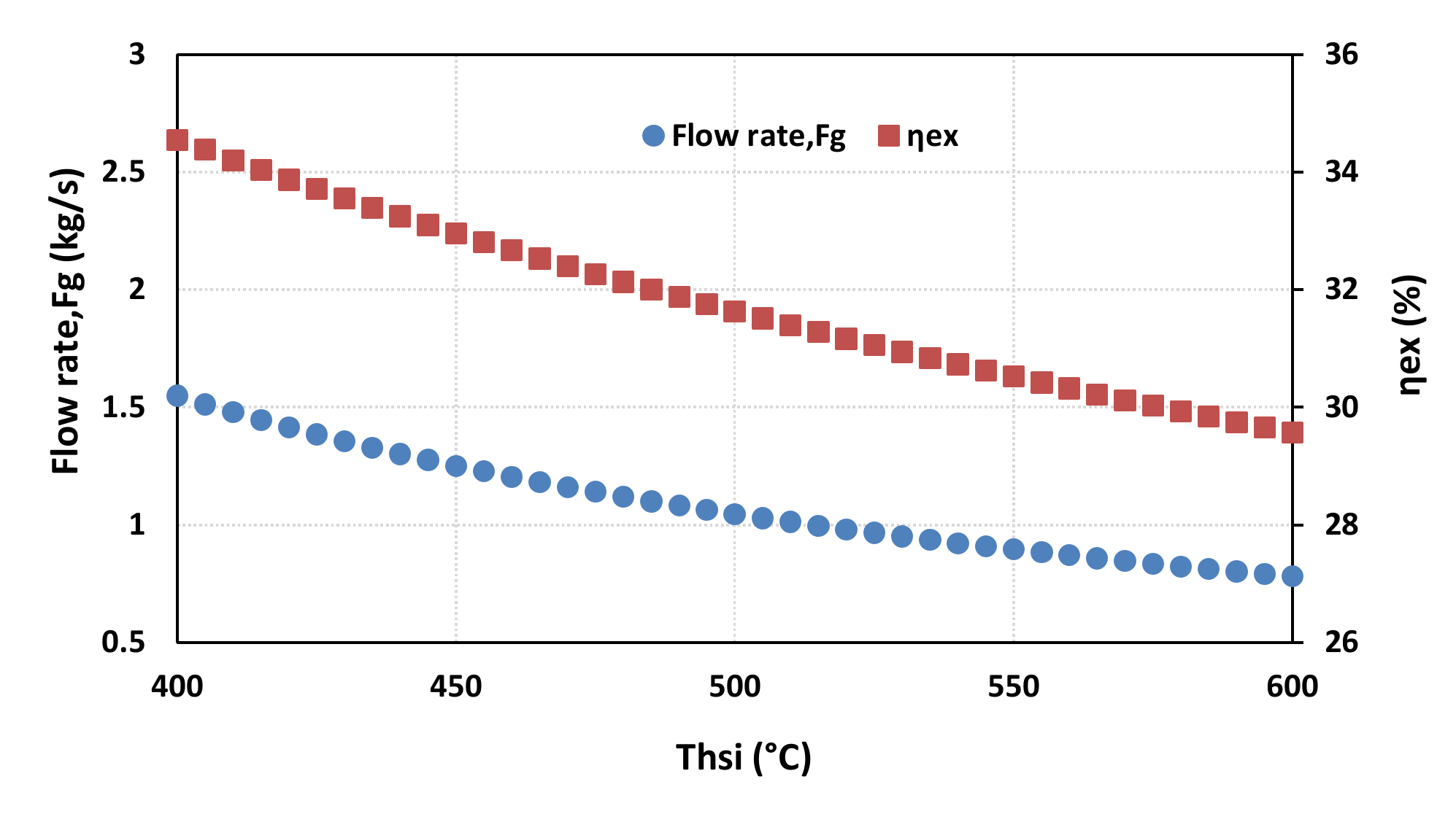
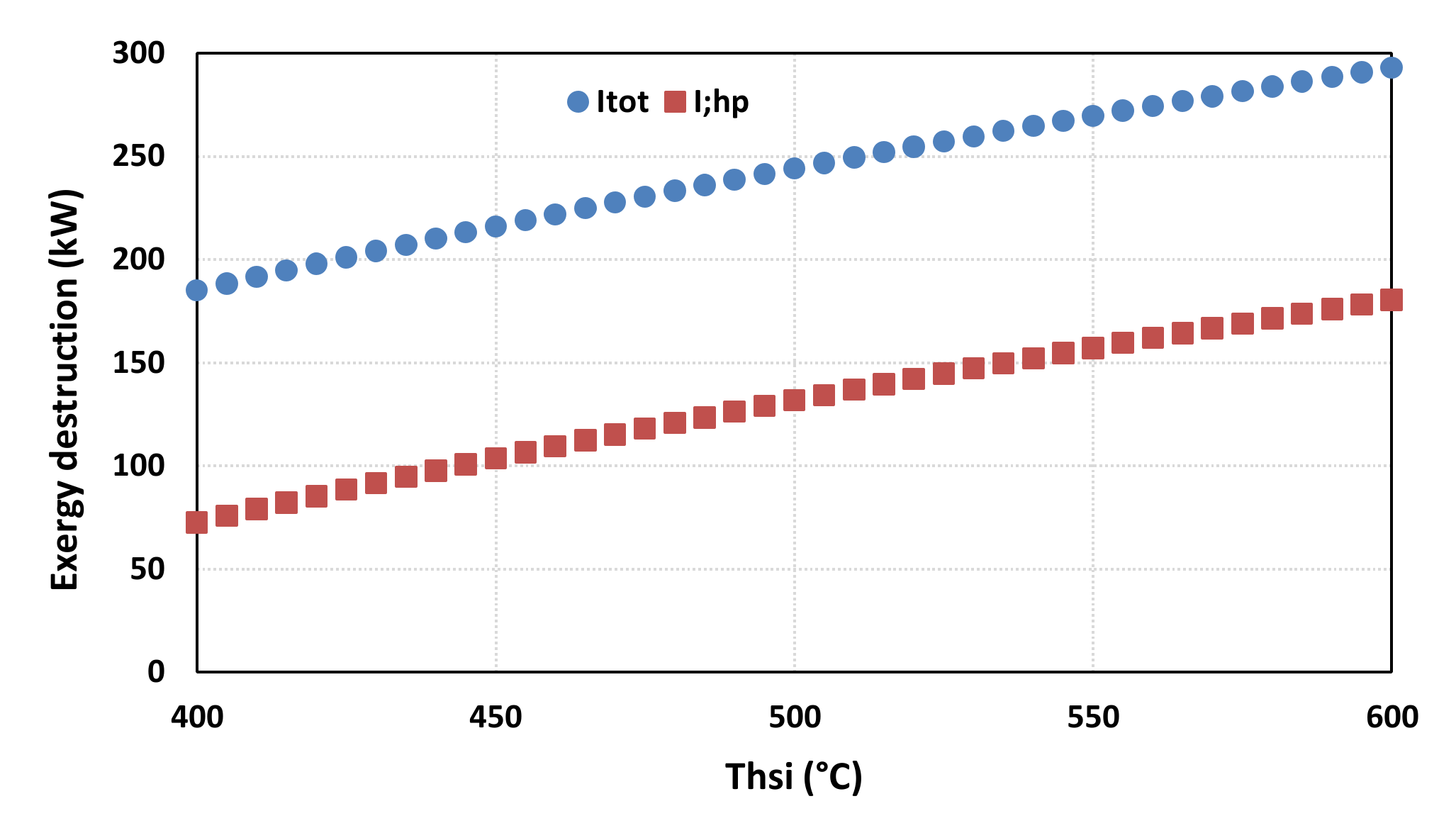
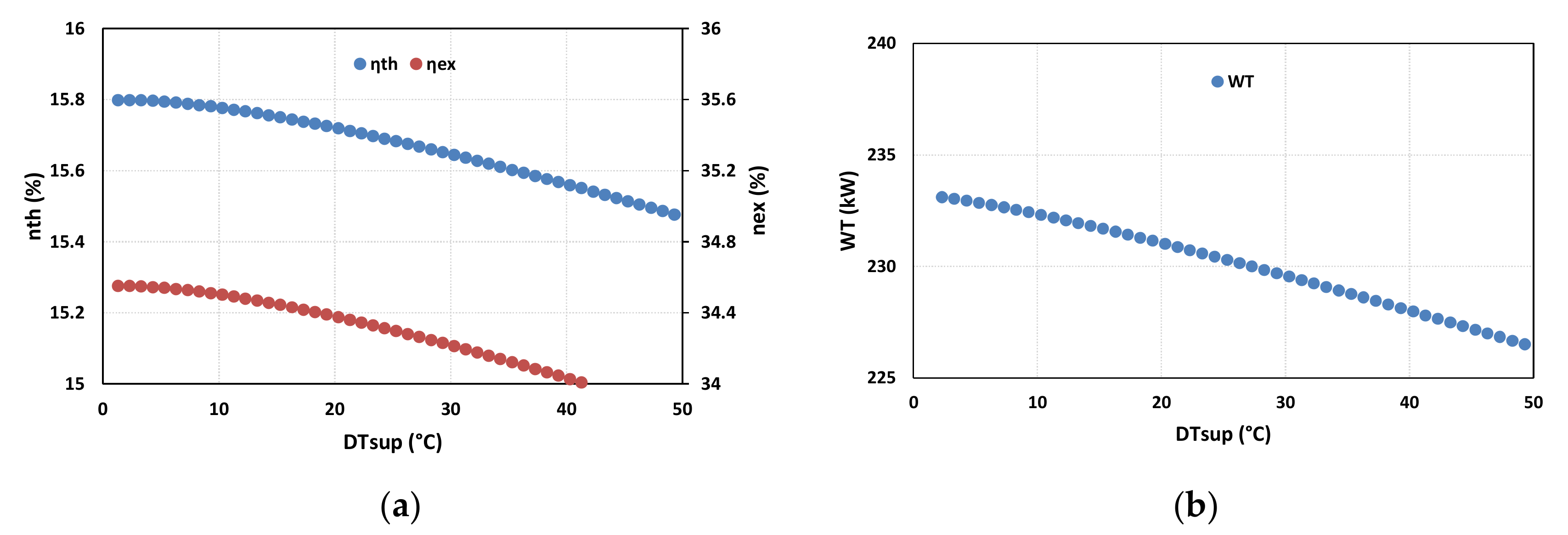
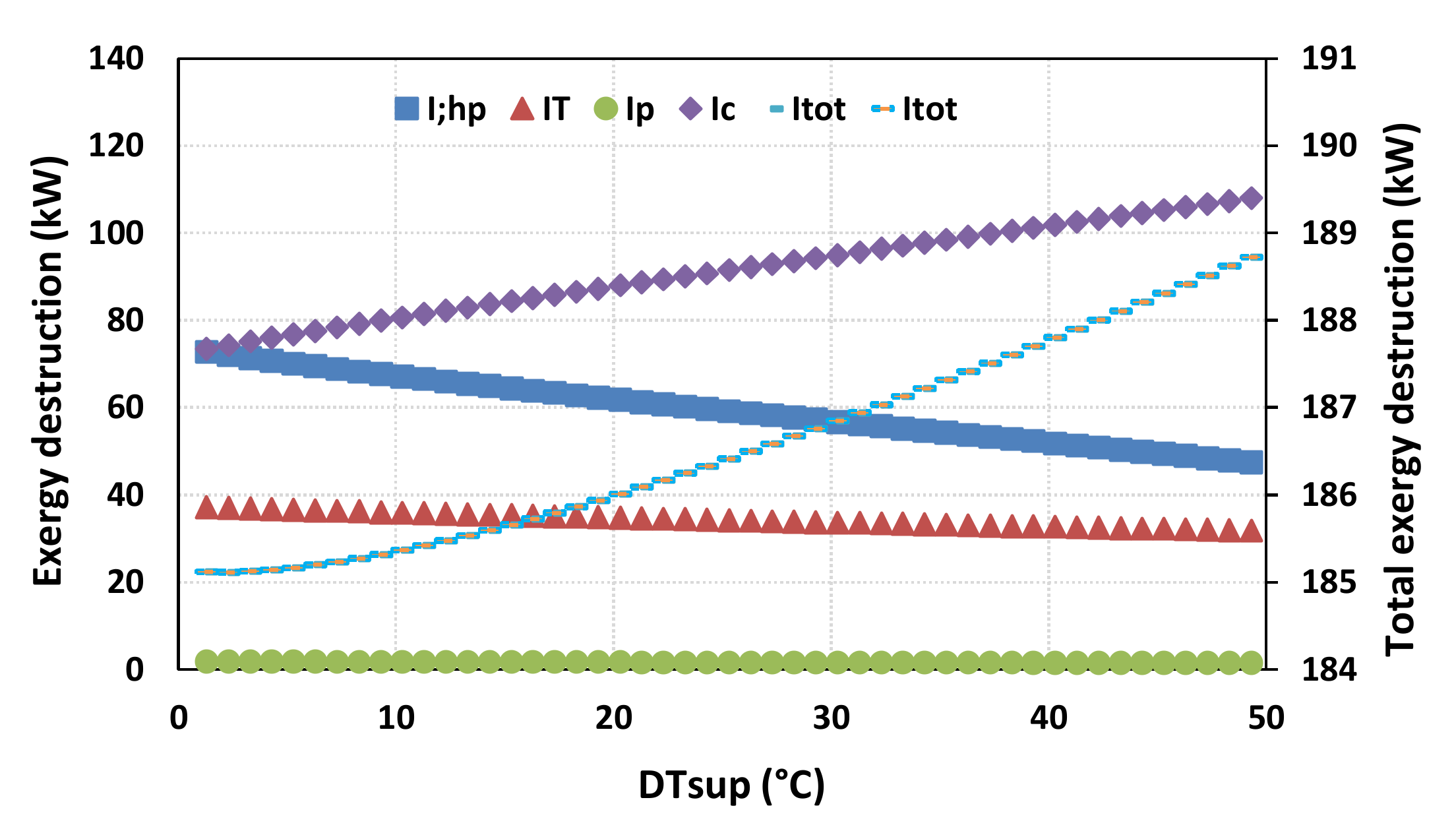
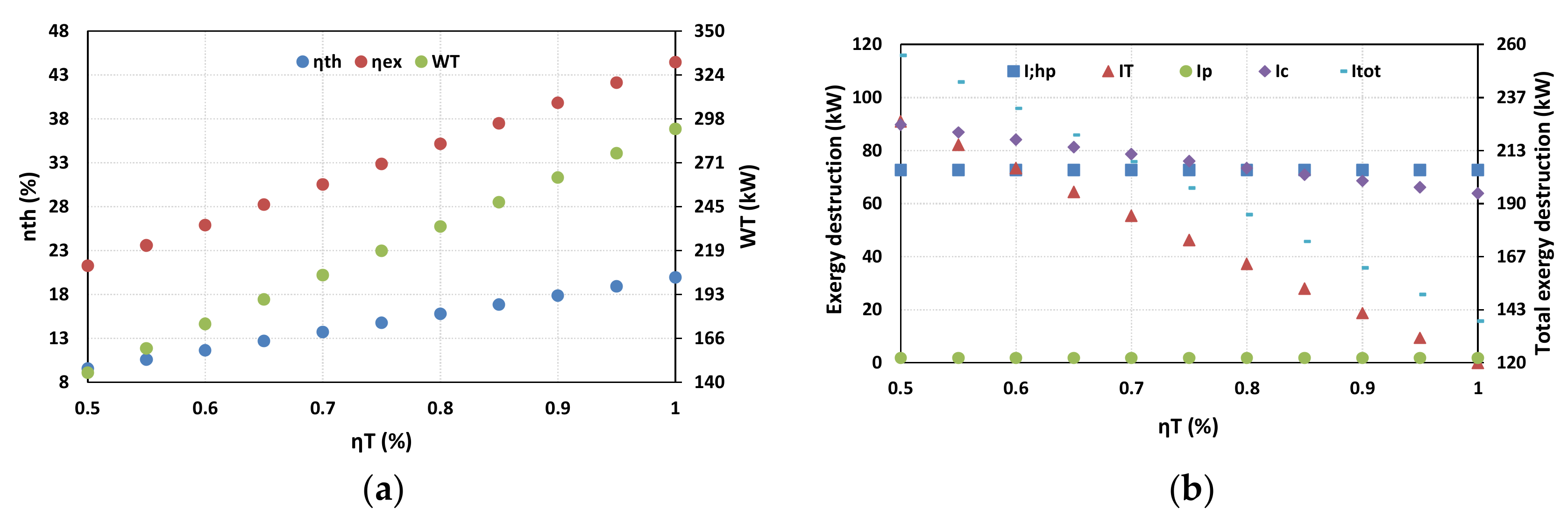
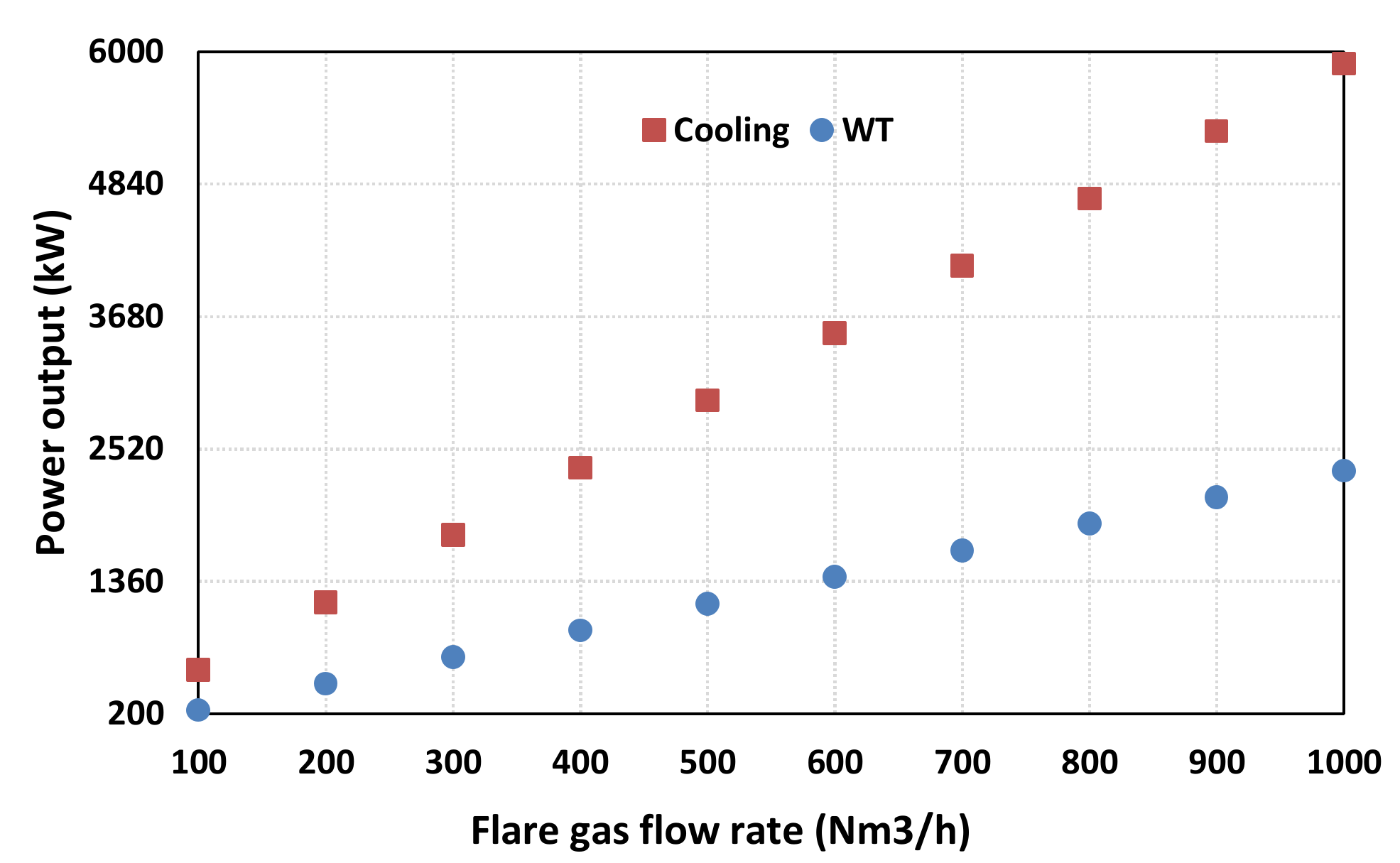
| Coefficient | Value |
|---|---|
| A | −4.30E−17 |
| B | 2.75E−13 |
| C | −7.22E−10 |
| D | 9.96E−07 |
| E | −7.61E−04 |
| F | 3.07E−01 |
| G | −4.71E+01 |
© 2020 by the authors. Licensee MDPI, Basel, Switzerland. This article is an open access article distributed under the terms and conditions of the Creative Commons Attribution (CC BY) license (http://creativecommons.org/licenses/by/4.0/).
Share and Cite
Semmari, H.; Filali, A.; Aberkane, S.; Feidt, R.; Feidt, M. Flare Gas Waste Heat Recovery: Assessment of Organic Rankine Cycle for Electricity Production and Possible Coupling with Absorption Chiller. Energies 2020, 13, 2265. https://doi.org/10.3390/en13092265
Semmari H, Filali A, Aberkane S, Feidt R, Feidt M. Flare Gas Waste Heat Recovery: Assessment of Organic Rankine Cycle for Electricity Production and Possible Coupling with Absorption Chiller. Energies. 2020; 13(9):2265. https://doi.org/10.3390/en13092265
Chicago/Turabian StyleSemmari, Hamza, Abdelkader Filali, Sofiane Aberkane, Renaud Feidt, and Michel Feidt. 2020. "Flare Gas Waste Heat Recovery: Assessment of Organic Rankine Cycle for Electricity Production and Possible Coupling with Absorption Chiller" Energies 13, no. 9: 2265. https://doi.org/10.3390/en13092265
APA StyleSemmari, H., Filali, A., Aberkane, S., Feidt, R., & Feidt, M. (2020). Flare Gas Waste Heat Recovery: Assessment of Organic Rankine Cycle for Electricity Production and Possible Coupling with Absorption Chiller. Energies, 13(9), 2265. https://doi.org/10.3390/en13092265






